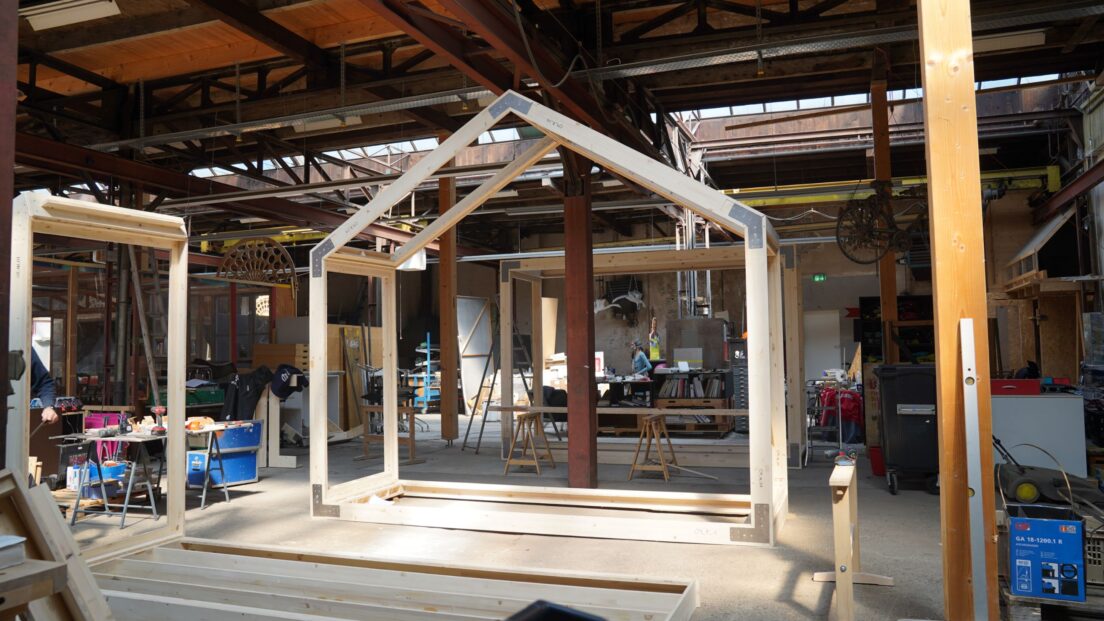Modular wooden fixtures for interim uses

The "àDisposition" project pursues the goal of making interim uses simple and sustainable thanks to modular installations. The BFH researchers produced four prototypes together with the project partners and set them up at DISPO in Nidau.
The whir of a cordless screwdriver rings through the DISPO in Nidau. In the old factory hall, which offers space for creative, cultural and business people, four prototypes of space modules are being built that day, thanks to which it should be possible in future to implement interim uses of vacant buildings and wastelands simply and sustainably. The aim is to add ecological, economic and social value to unused spaces. This is the goal of researchers from the Institute of Timber Construction, Structures and Architecture IHTA at the Bern University of Applied Sciences BFH, together with partners from industry, in the Innosuisse research project “àDisposition”.
Various modular solutions tested
In the project, the researchers are developing a modular construction kit for room modules and interior fittings. A central component is a configurator, thanks to which project ideas can be easily tested, presented and implemented in a time- and resource-saving manner. Based on digital designs, the BFH researchers are now creating prototypes at Dispo in Nidau in collaboration with the project partners. Using these, they are investigating and improving various module solutions. The project team is testing different systems, connecting elements and segment shapes and, after a short time, is already able to identify the most promising strategies for a lightweight, reusable and easily reconfigurable modular system.
Time for assembly varies depending on the degree of fabrication
The requirements for modular fixtures are high: assembly and disassembly should be possible for non-professionals and the components should be light enough that only two people are needed for assembly. The fixtures should also be adaptable, easy to rearrange and easy to transport and store. During the assembly of the prototypes, it already becomes apparent how important it is to select the ideal degree of prefabrication. If the frames of the modules are delivered already screwed together, the fixtures can be set up in a very short time. Transport and storage, however, turned out to be more difficult. Conversely, assembly took significantly longer if the components were delivered individually and thus compact.
Importance of digital continuity
Another aspect that the researchers are testing with the production and assembly of the prototypes is the digital chain “design to production”. The modules are designed in the configurator, and the data for production is then automatically exported to CadWork. These files formed the basis for material orders and the production process. Here, the importance of digital continuity for a fast and simple production process became apparent.
In a next step, the researchers are looking at the equipment of the modules. For example, the walls are another design element and additional (insulating) layers must meet the requirements for sound and heat insulation. These requirements differ greatly depending on the use.
“àDisposition – Spaceship Planet Earth. Sustainable and temporary use of buildings and vacant sites through simple and modular structural measures” is a research project funded by Innosuoisse that runs until June 2025. Project partners are C2 Beat Cattaruzza GmbH, Beer Holzbau AG, Pius Schuler AG, Prona AG and Bauart Architekten und Planer AG.